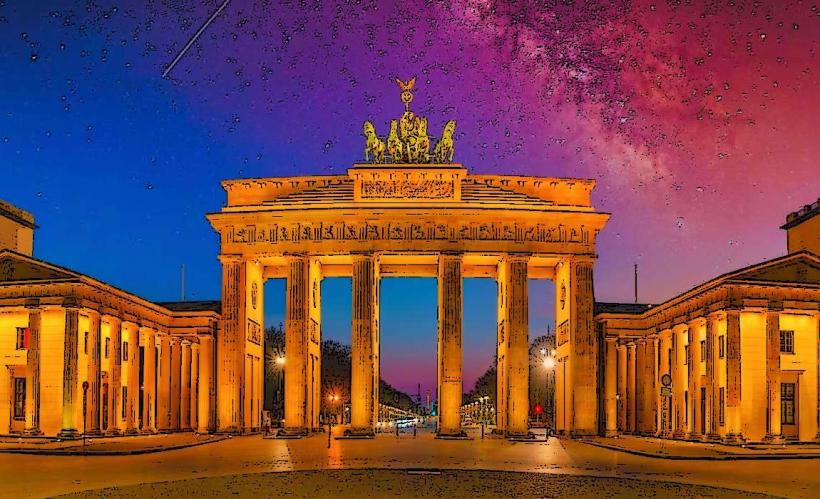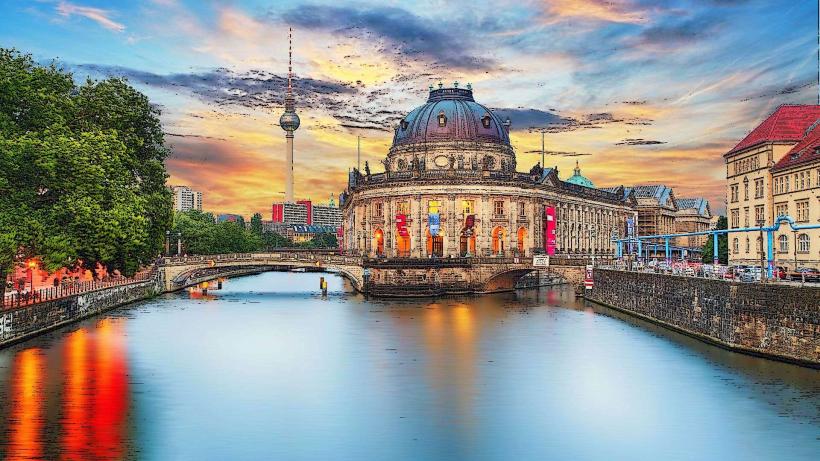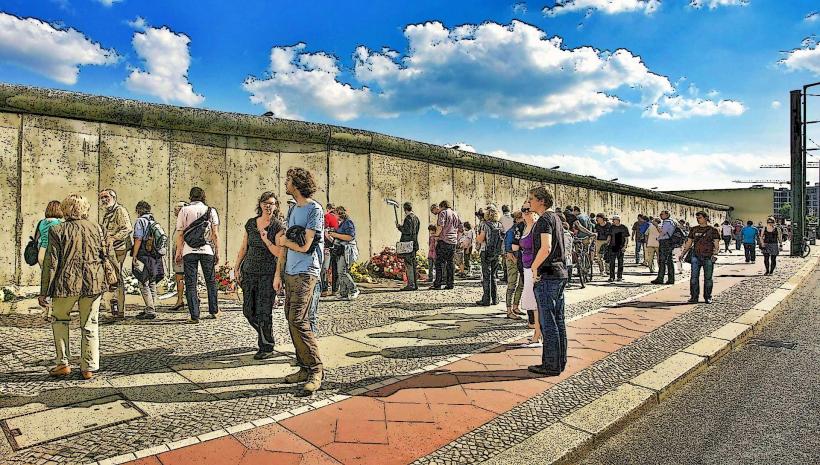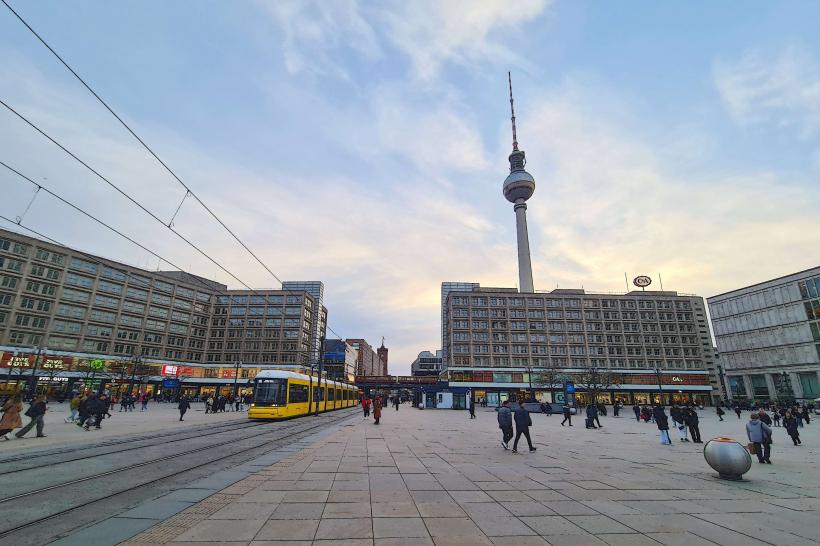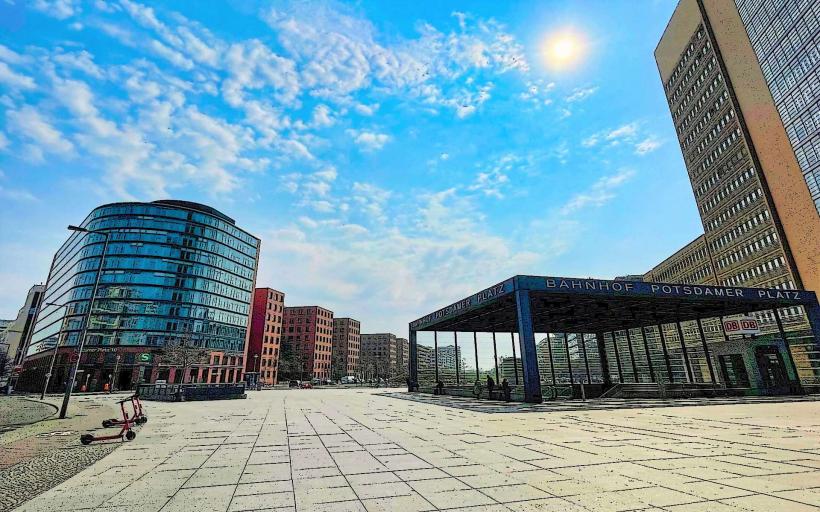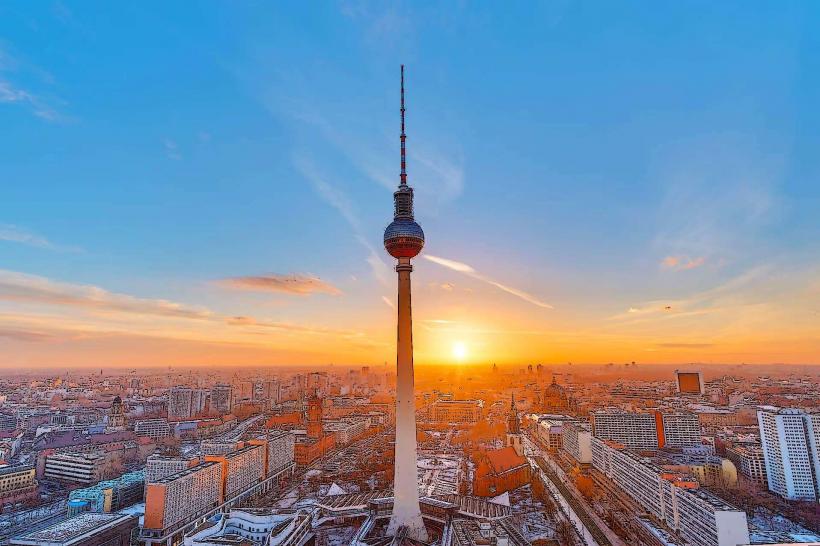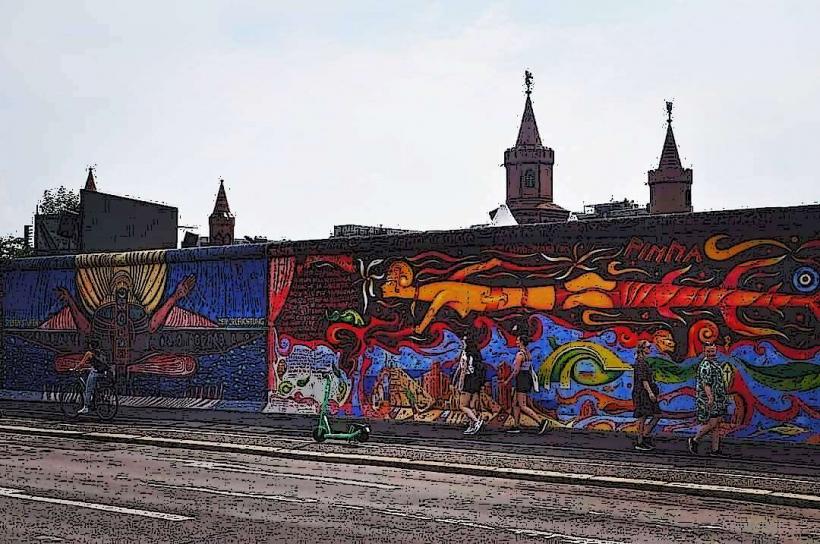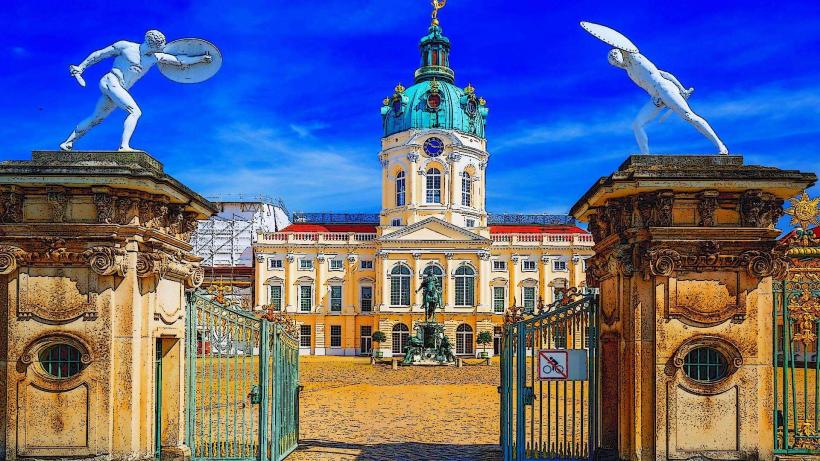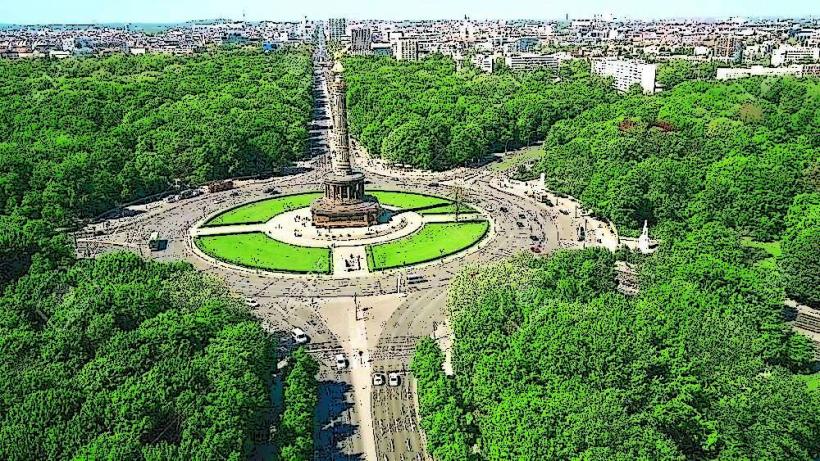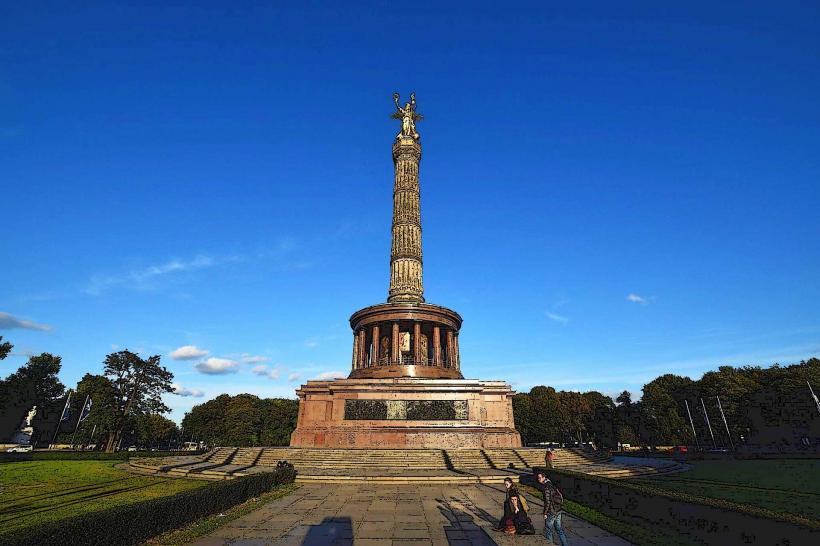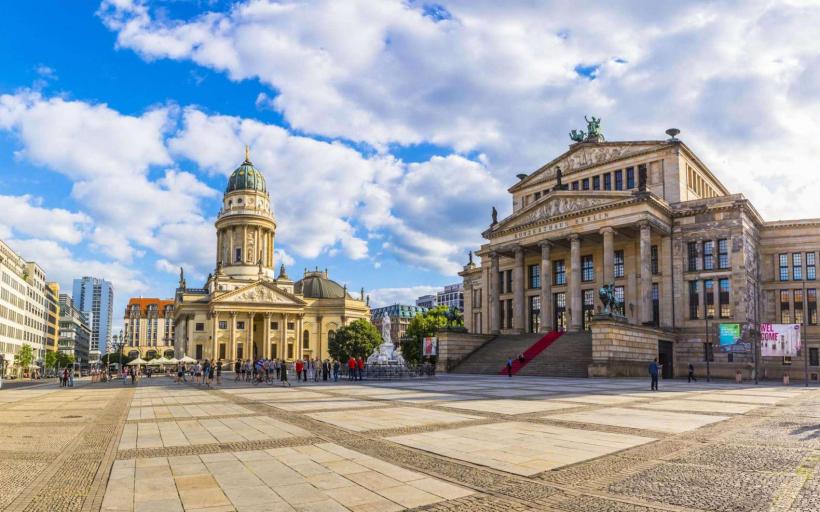Information
Landmark: Kaiser Wilhelm Memorial ChurchCity: Berlin
Country: Germany
Continent: Europe
The Kaiser Wilhelm Memorial Church (Kaiser-Wilhelm-Gedächtniskirche) is one of the most iconic landmarks in Berlin, Germany, known for its unique history, distinctive architecture, and role as a symbol of both destruction and reconciliation. Located in the Breitscheidplatz area, near the Zoologischer Garten (Berlin Zoo), the church stands as a poignant reminder of the city's turbulent past, particularly its experience during World War II.
1. Historical Background
- Construction and Dedication: The Kaiser Wilhelm Memorial Church was originally built between 1891 and 1895 in memory of Emperor Wilhelm I, the first emperor of the newly unified German Empire. The church was intended to be a symbol of the empire’s strength, with its grand, neo-Romanesque architecture standing as a reflection of the imperial ambitions of the time. It was consecrated on October 1, 1905, and quickly became a prominent feature of Berlin's cityscape.
- Name and Purpose: The church was named after Kaiser Wilhelm I, the founder of the German Empire, and was meant to honor his memory as well as serve as a place of worship for the growing city. The church was designed by the architect Franz Schwechten in a neo-Romanesque style with a large central tower, which became one of the tallest buildings in Berlin at the time.
2. Destruction in World War II
- Damage During the Bombing: On November 23, 1943, during World War II, the church was severely damaged during an air raid by the Allies. The bombing, which was part of the larger Allied bombing campaign aimed at crippling German infrastructure, left the church in ruins, with much of its facade, the central tower, and the roof destroyed.
- Symbol of War Destruction: The Kaiser Wilhelm Memorial Church’s destruction became a powerful symbol of the devastation brought about by the war. Despite the damage, parts of the church’s exterior, including the famous cracked tower, remained standing, becoming a haunting reminder of the destruction that had befallen Berlin and Germany during the war.
3. Reconstruction and New Purpose
- Post-War Restoration: After the war, the decision was made to preserve the ruined church as a memorial to the devastation of war. In the 1950s, efforts began to rebuild parts of the church. The Kaiser Wilhelm Memorial Church Foundation was established to oversee the restoration, with the goal of maintaining the original elements of the church while adapting the structure for modern use.
- New Church Design: In the 1960s, a new church complex was built adjacent to the original ruins. The new structure was designed by the architect Egon Eiermann and was completed in 1961. The new church, known as the Neue Kirche (New Church), was designed in a modern, minimalist style and incorporates elements that contrast sharply with the original, more ornate structure. This juxtaposition of old and new symbolizes the tension between Berlin’s past and present, and the desire to remember the past while moving forward.
- The Ruins as Memorial: The remains of the original church, particularly the cracked tower, were preserved as a war memorial. The surviving parts of the tower have been left intact as a reminder of the war’s destruction and the resilience of the city. The tower’s cracked appearance has come to symbolize both the trauma of war and the ongoing process of healing.
4. Architectural Features
- Old Church (Ruins): The original Kaiser Wilhelm Memorial Church was a striking example of neo-Romanesque architecture, with its massive central tower reaching a height of 113 meters (371 feet). The tower was adorned with elaborate carvings and mosaics, and the church’s interior featured beautiful stained glass windows and intricate mosaics. The church's overall design was meant to reflect the grandeur and power of the German Empire.
- New Church (Modern Addition): The modern church building, constructed alongside the original ruins, was designed by Egon Eiermann. It features a stark, geometric design with a hexagonal base, sharp lines, and a minimalist aesthetic. The building is made of blue glass and concrete, which contrasts with the older, ornate elements of the original church. The modern church also houses a smaller chapel, which is used for services and special events.
- The Bell Tower: One of the most prominent features of the new church is the bell tower, which houses a set of bells that are rung during special ceremonies and services. The bells are symbolic of the continuity of life and faith in the face of adversity.
- Memorial Hall and Mosaics: Inside the church, visitors will find memorial halls and a museum dedicated to the history of the church, the war, and Berlin’s postwar reconstruction. Notably, the church still retains some of the original mosaic artwork, which survived the bombing and was carefully preserved during the restoration process.
5. The Church as a Memorial
- Symbol of Peace and Reconciliation: Today, the Kaiser Wilhelm Memorial Church is a symbol of peace and reconciliation. Its combination of a ruined church with a new, modern structure reflects the city’s recovery and rebuilding after the horrors of the war. The church is a reminder of the human cost of conflict but also stands as a testament to Berlin’s resilience and hope for the future.
- Commemoration of War Victims: The church has become a site of remembrance for the victims of World War II, both military and civilian. It serves as a space where people can reflect on the devastation caused by the war and pay their respects to those who suffered during that time.
- Role in Modern Berlin: The church is not only a memorial but also a functioning place of worship. It hosts regular Christian services, including those in honor of Christmas, Easter, and other significant occasions. Additionally, the church is used for cultural events, including concerts, exhibitions, and special services that emphasize themes of peace, tolerance, and understanding.
6. Visitor Experience
- The Memorial Hall: One of the most significant parts of the church is the Memorial Hall, which contains displays and exhibitions about the church’s history and the history of Berlin during and after World War II. The exhibits include photographs, documents, and artifacts related to the church’s destruction and restoration.
- The Cracked Tower: The cracked tower remains one of the most iconic elements of the church, and it has become a symbol of Berlin’s difficult and painful history. Visitors can stand at the base of the tower and contemplate the lasting effects of war and destruction.
- Modern Chapel: The modern chapel in the New Church offers a serene, contemplative space for visitors. Its minimalist design and the use of natural light create an atmosphere that encourages reflection and prayer.
- Visiting Hours and Services: The Kaiser Wilhelm Memorial Church is open to visitors throughout the week. It offers guided tours and audio guides that provide in-depth information about the history and significance of the church. Regular church services are held, and the church is a popular spot for tourists seeking to understand Berlin’s history and the spiritual resilience of its people.
7. Cultural Significance
- Symbol of Berlin’s Recovery: The Kaiser Wilhelm Memorial Church stands as a symbol of Berlin’s recovery and reinvention after World War II. The church embodies the city’s spirit of overcoming adversity and rebuilding from the ruins. It serves as a reminder that even after immense destruction, there is the possibility for healing, reconciliation, and renewal.
- Prominent Tourist Attraction: The church has become one of the most visited landmarks in Berlin, drawing millions of visitors each year. Its unique history, architectural contrast, and emotional resonance make it an essential stop for anyone exploring Berlin’s complex past.
8. Conclusion
The Kaiser Wilhelm Memorial Church is much more than just a church—it is a symbol of Berlin's turbulent history, its survival through war, and its commitment to peace. The contrast between the ruined church and the modern structure highlights the resilience of the city and serves as a memorial to the countless lives lost during the war. For visitors, the church offers an opportunity to reflect on Berlin's painful past while witnessing the strength and hope that has shaped the city’s present and future.

